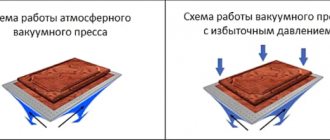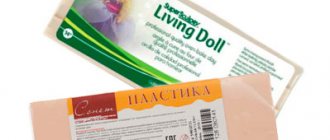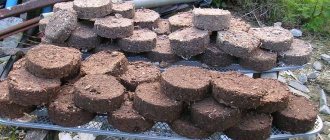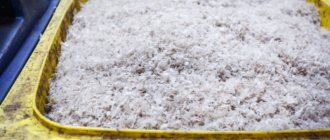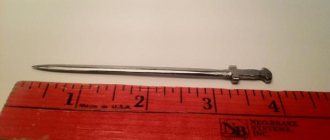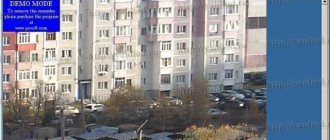Collection of raw materials and pressing
The plastic recycling process begins with the receipt of raw materials. No special license required.
Many stop at this stage and start a full-fledged business. It consists of collecting raw materials, pressing them and then selling them.
Garbage is actually only conditionally free and not everyone has access to city landfills. Therefore, if you do not do this on an industrial scale, you can try to exclude the landfill administration from this chain and receive raw materials directly from people and enterprises.
This can be done either through collection points or by installing special boxes around the city for collecting plastic bottles.
People throw bottles into such boxes for free, because they understand that in this way they are making their small contribution to improving the environment. You can also work with people’s awareness by hanging explanatory signs on such boxes.
To place such a box in the courtyard of an apartment building, you should first coordinate this issue with the management company or a representative of the HOA. The argument for installing a box is to help keep the yard clean.
You can also agree on the installation of separate boxes (for plastic, paper and glass) in the offices of large enterprises. Thus, the enterprise will not only receive an “eco-title” and free waste removal, but also additional funds for small consumables.
Subsequently, bottles from such points are removed and pressed into bales. For pressing you need a press. The most budget option is a manual press, which you can take with you when collecting raw materials. But for greater productivity, you need a hydraulic press.
Technology and materials
Before deciding on the design and, accordingly, the amount of materials needed, you need to understand where the press will stand. The dimensions of the equipment directly depend on the height of the ceiling in the room.
There is no point in making high-power plastic presses yourself, since the price of work and purchased spare parts is almost equal to the cost of an industrial machine.
Advantages of self-assembly:
- saving money: sometimes very relevant, especially in organizing a small business;
- affordable materials that are available even in the most remote cities;
- there are no costs for transportation and installation of heavy equipment, it is assembled directly on site;
- the press is manufactured strictly for its tasks; the size and density of the bale packaging depends on the wishes.
If you have no experience in working with metal and welding, it is better to contact a specialist , since professional workshops have all the necessary tools.
Below we will consider the technology for assembling a press for plastic bottles with manual control, but with sufficient loading capacity of up to 30 kg.
Specifications
Here are the main ones:
- Height is the determining standard size. It depends on the size of the hydraulic cylinder lever. In this version it can vary from 1.5 to 3 meters.
- The size of the plates and, consequently, other dimensions depends on the width of the press plates.
- The area of the bed is approximately 1 to 1.5 meters.
- Electric motor power . It is advisable to install a 380 Volt engine, but 220 Volt is also possible. Power determines the speed of bringing together and spreading the press plates.
- Bale or briquette weight . In principle, the amount of loaded material depends directly on the physical capabilities of the operator, how much weight a person can lift in constant operation. This model involves packing a stack of bottles weighing up to 25 kg.
- The size of the bale depends on the size of the slabs. The optimal width is 300-400 mm. Thickness depends on weight. Bottles are not a very convenient material for pressing; they slip and stick out. Therefore, the briquette may look bloated and sloppy.
Necessary materials
Here's what you can't do without when creating a press for plastic bottles with your own hands:
- Hydraulics unit . What it will consist of depends on the expected power and dimensions. If it is a mini-press, then just a hydraulic cylinder from a jack is enough. But in this case, the quality of the compressed material will depend on the strength of the operator’s hands, since it does not significantly increase the manual effort. If you need a more powerful press, you will need: an oil pump, connecting pipes, an oil distributor and cylinders.
- Electronics . An engine (you can even take a used model), a starter and a small control panel.
- Sheet metal and beams (channels, angles, etc.).
Equipment for work
You will need the following units:
- electric drill;
- grinder and a set of metal discs;
- welding machine and set of electrodes.
There may be a problem connecting the electronic engine control system , so if you do not have the relevant experience, it is better to find an experienced instrumentation specialist. For him, it's a five-minute job.
Drawing and manufacturing diagram
In order to get started, you need to decide how to install hydraulic cylinders . That is, which of the plates will be movable - upper or lower. The location of the hydraulic unit and, in fact, the drawing itself depend on this.
Below is a diagram with the classic (and simpler) cylinder arrangement.
Stages of assembling a press for PET bottles with your own hands:
- Making the bed . It is more expedient to make the frame first, to which the remaining components will then be attached. It is advisable to choose metal corners with a significant margin of strength, since in addition to the weight of other elements, the frame must also withstand constant loads when pressing briquettes. The base is made flat and rectangular. To strengthen the structure, it can be additionally reinforced with steel or cast iron plates. In frame dimensions, the determining size is the height. It consists of the dimensions of the hydraulic cylinder, the thickness of the running plate and the fixed part (table), as well as the expected size of the lift of the upper part of the plate.
- Fastening the hydraulic unit . According to the drawing, the cylinder or jack is installed on the base of the body. The movable part of the cylinders is fixed from below to the movable plate, through it transmitting the clamping force to the material. Springs are fixed at equal distances on both sides. Their task is to smoothly return the press to its original state.
- Movable part of the table . It is made of a movable base, the width of which is slightly less than the distance between the supports of the frame. Through a tube it is welded (or fixed) to the jack rod. The plate of the moving part of the table is fixed to the base from above. It can be reinforced with a frame structure.
- Fixed part (plunger) . Its dimensions are equal to the moving part, it is welded to a fixed frame in the upper part of the frame.
- Electric motor and starter . Installed on a movable table. The mounting of the starter is determined by the location of the piston. The engine pumps oil, that is, it drives the oil pump.
- Additional holes on the frame . Performed to regulate the position of a fixed plate. That is, by moving it up or down, you can increase or decrease the size of the bale being pressed.
Crushing with a shredder
The next step after collecting the raw materials is the process of obtaining flex (crushed plastic).
At this point we would like to introduce you to Dave Hakkens. Who, with the help of his YouTube channel, is trying to make the plastic recycling process more accessible.
Dave shows us how he builds a mini shredder in his garage step by step.
To obtain high-quality flex, bottles must be sorted by color and separated from caps before crushing. The lids are made of PVC material, which has different properties and is processed separately.
After sorting, the bottles are crushed using a shredder, washed and dried. In this way, you can get high-quality flex, which is in demand both domestically and abroad. The most valuable is flex from colorless bottles.
Press for plastic bottles PRESSMAX - reliability and ease of use
Press for plastic bottles with pressing force from 20 to 50 tons (PRESSMAX 520 - 550)
In addition to the environmental value, enterprises for sorting and recycling waste paper, PET, metal and other solid waste, equipped with a press for plastic bottles, create cheap recyclable materials for the industry. Enterprises make school notebooks, packaging containers, toilet paper, printing paper and many other products from solid waste. Recycling waste with a plastic bottle press as an independent activity also creates additional jobs and, accordingly, revenues to the budget.
In this regard, a press for plastic bottles becomes especially important - it is an indispensable link in the chain of primary waste sorting. Vertical and horizontal presses for plastic bottles are used for pressing, in addition to plastic, cardboard, used containers and packaging, waste paper, and printing waste
Vertical and horizontal presses for plastic bottles are used for pressing, in addition to plastic, cardboard, used containers and packaging, waste paper, and printing waste.
The Pressmax company produces and supplies presses for plastic bottles - based on Marzocchi
and
"Vivoil"
, filter elements
"MPspaFILTRI"
, as well as distributors
"Badestnost"
.
All our plastic bottle presses meet high European quality standards
, have a durable and long-lasting design, while the price of our products is several times lower than their European counterparts, which allows us to supply the press for PRESSMAX plastic bottles, including to the EU countries. The cost of a press for plastic bottles depends on its dimensions - the size of the model, and other parameters. The price of a press for plastic bottles, as well as other PRESSMAX equipment, can be found out through the return form on our website by making a request or by calling our specialist
Granulation using an extruder
To get one step closer to the final product, flex can be processed into granules. This is done using extrusion. Dave also shows how he assembles a small extruder in his garage.
Crushed plastic is poured into the extruder, which moves inside the housing using a screw shaft (like a meat grinder). The case is equipped with a heating system, which ensures the melting of the plastic. Next, the plastic is squeezed out through small holes in the form of rods. The rods pass through a rotating knife and granules are obtained - a finished product for the production of various plastic products.
Selection of mold material
When making molds for plastic injection, it is very important to understand what steel the forming parts, forming plates, guides and pushers will be made of. The quality of steel significantly affects the life of the mold, as well as the restrictions on the materials used
Sometimes mold manufacturers, realizing that the client’s need in the future will not exceed the number of closures and 100,000, are a little disingenuous by declaring that they supply equipment with a service life of more than a million, although in fact they sell molds made of softer metal with a service life of only 300,000 In Russia they especially like to sell molds made of duralumin, convincing potential customers about the long service life of this material.
Injection molding machines (TPA)
The resulting granules are widely used in the production of products using injection molding machines.
It is difficult to name at least one industry where small plastic parts are not required. Therefore, the use of injection molding machines is very extensive.
Skillful hands manage to assemble them in their garages. We can see this in an example from a video from Grigory Uryvsky’s channel, where he demonstrates his homemade injection molding machine.
The granules poured into the injection molding machine are melted and the plastic is pressed into the prepared mold (matrix). The output is a finished product.
Making molds also costs good money, so only producing products in large quantities will be profitable.
Since we decided to cover this topic using the example of homemade equipment, then we will show several examples of the use of recycled plastic in handicraft production in India.
What is the purpose and functions of the press in everyday life and its varieties
Such devices have a very wide range of applications.
This can be not only squeezing out various parts, but also a device for a walk-behind tractor that collects hay and lays it in even rolls. Perhaps the manufacture of some durable concrete products is required, or perhaps a lot of sawdust has accumulated, from which good fuel can be made. Let's look at the main jobs that the press can perform in everyday life. This equipment can be divided into several types. The design of some types is similar, while others have fundamental design differences.
The simplest table press
Press for extruding parts from any base or shell
Such equipment will come in handy in garage conditions. It is not profitable for an ordinary motorist to purchase it, because... the cost is quite high, and they rarely perform the work. But making a press for the garage with your own hands at minimal cost is quite acceptable.
You can use a similar press for silent blocks or bearings, i.e. for those parts whose installation and dismantling cannot be done manually. Having spent a little time, you can design and assemble a device, the cost of which in a store can exceed 50,000 rubles.
Wooden press for making fuel briquettes
Device for compacting various materials into dense briquettes
Such a device will help put old newspapers into use, which will make good fuel for the stove. A waste paper press will help you save on purchasing coal or firewood. In addition, the need to dispose of unnecessary correspondence, of which many have accumulated a huge amount, disappears.
Approximately the same principle can be used to make a sawdust press. The excellent fuel that will be obtained when using it has proven itself well not only in stove heating, but even on vacation. Long burning, intense heat and lack of smoke – these are the advantages that helped fuel briquettes made using a press gain popularity. Shish kebab, barbecue or a hot fire with minimal flame - what else is needed for a good rest?
And this is a schematic representation of it
There is another option to compress coal chips instead of sawdust. In this case, it will be a fuel that burns for a very long time and produces a huge amount of heat. And there is usually a lot of such crumble in the coal sheds of houses that are heated with it. So why not put him into action?
Press for recycling plastic and cardboard
Surely many have seen cardboard boxes that are tightly compressed into a tight stack. This is also the work of the press. After all, it is much more convenient to export such material when it is compactly packaged. A cardboard press is one of the easiest to make with your own hands. Other solid materials can be disposed of using approximately the same principle. For example, with the help of a press, plastic bottles are transformed into neat layers that are convenient for transportation.
A mechanical cardboard press is a very convenient device.
But still, pressing plants bring the greatest help in agriculture.
Mechanized harvest assistant
To collect the straw remaining on the field after harvesting, or forage hay, it is optimal to use a homemade pick-up press. Moreover, it will not only make work easier. Straw will be rolled into neat, dense rolls that are convenient to transport and store.
In the drawings of a do-it-yourself hay press, it is necessary to indicate the dimensions - this will help in the end to assemble everything correctly. Although there are options for very simple units, more on that below.
The simplest wooden hay press - minimum material and manufacturing time
Well, for starters, before you start making such a unit yourself, it is important to understand the designs of its various types, understand their differences and decide on the necessary material
DIY plastic recycling at home
Plastic products have become an integral part of our lives, so today the topic of recycling plastic at home has acquired particular significance.
Recycling plastics, even at home, does its part to protect the environment from huge piles of almost non-degradable plastic waste. The basis of all plastics is polymers (compounds having a high molecular weight and consisting of monomers). These days there are many types of plastic, which, however, can be combined into two large groups:
- Thermosetting plastic. Represented by polyurethane, epoxy, phenolic resins, etc.
- Thermoplastic. Approximately 80% of plastic products are made from this material. Includes types: HDPE, LDPE, PET, PP, PS, PVC, etc.
It is impossible to recycle type 2 plastics at home, because...
The ability to recycle plastics depends on the type of raw material from which the plastic product is made.
Thermoset plastic cannot be re-melted (in some cases, it is crushed in factories and used as a filler). Thermoplastics, when heated, melt without losing their initial properties and, upon cooling, regain their original shape. That is why “at home” it is possible to process only thermoplastic plastics using special, but “simple” equipment and obtain new useful products and materials from such plastic waste.
The most common recycled materials are PET bottles and other plastic containers.
Helpful information! To understand what type of plastic a product is made of, you need to pay attention to the markings on its surface (often on the bottom).
It has the shape of a triangle, inside of which there is a number corresponding to the type of polymer. Also under the triangle is a letter designation of the type of plastic. Industrial machines that process plastic are expensive and require large areas.
To recycle plastic “with your own hands,” you will need the following devices (or one of them, depending on your goal):
- Compression device (press).
- Shredder. Grinds plastic waste to obtain crumbs of a given size, which is then further processed. The device includes several main components: a grinding part, a feeding hopper, a frame and a power source. The most labor-intensive stage in the manufacture of the device is the production of the grinding element, consisting of a shaft with blades “strung” on it. The loading hopper is made of sheet metal (waste material, such as old car parts, can also be used here). The required size of the resulting plastic fraction is set using a mesh installed under the grinding part.
Modern equipment for small businesses
Russian-language websites traditionally describe the processes of processing plastic bottles using domestic equipment, which requires more than two hundred square meters to accommodate and about six hundred thousand rubles to purchase. Along with this, today there is a lot of equipment, small in size and very cheap in production cost, for processing plastic bottles at home.
Such equipment does not require a lot of space to be placed; it is easy to rebuild it to change the products being produced; you can do it yourself. Naturally, it will not provide the opportunity to earn millions every month, but it will make a startup for converting plastic raw materials accessible to almost everyone and will serve as the foundation for the further development of such a business.
Complete plastic bottle recycling line includes:
- shredder;
- agglomerator;
- extruder
This set of units will ensure complete recycling of plastic bottles.
Agglomerator
This unit is intended for sintering flex. The cost of the cheapest industrial designs is about two hundred thousand rubles. Therefore, it is not surprising that craftsmen make such units on their own. Of course, it is impossible to manufacture such a unit from scratch without milling and turning. However, you can use the drawing and ask your friends who work at the factory to make the necessary parts.
Many who organize the conversion of plastic bottles in garages and other utility rooms outside the attention of government agencies monitoring compliance with sanitary and environmental standards use existing electric furnaces as the working chamber of the agglomerator, since the flexible begins to sinter at temperatures starting from 180˚C. The most popular are Dave Hakkens agglomerators.
Types of plastic waste
Today, all types of plastic that have special markings are recycled. To recognize it, you need to find a triangle mark on the surface of the plastic product, and in it - a number indicating the type of material to be melted:
- 1 – PET – polyethylene terephthalate for the manufacture of food packaging;
- 2 – HDPE – dense polyethylene for creating a wide range of household products, including thick-walled containers for storing food;
- 3 – PVC – polyvinyl chloride for the production of non-food containers, pipes, furniture parts;
- 4 – LDPE – low-density polyethylene for film products, including those intended for storing food, and for flexible utensils;
- 5 – PP – polypropylene, a material safe for humans, therefore used for the production of children's things and food packaging, as well as car parts;
- 6 – PS – polystyrene, a material that is harmful only when in contact with fire, suitable for creating stationery products, thermal insulation coatings, and disposable containers;
- 7 – OTHER – a synthetic material that is not included in any of the above categories, this usually includes polycarbonate.
Press for PET bottles
For pressing plastic containers, PET bottles, HDPE, PP barrels and cans.
Loading the player. This Sinobaler vertical hydraulic press has a long stroke, which is ideal for pressing materials such as plastic bottles and aluminum cans. Every facility that processes plastic must have this press to compress the material into dense, compact bales for storage and transportation. Another important point is that this machine simultaneously presses and squeezes out the material.
A special drainage system collects all remaining liquids from bottles and cans that are released during pressing.
The operator's work area remains clean and safe at all times. Our standard models of PET bottle presses have a pressing force from 30 to 70 tons.
The compression ratio can reach 25:1 (this is also one of the advantages of presses with a long piston stroke - its use guarantees complete compression of bottles and cans). There are various models in our range, which are divided according to the size of the bale chamber. However, we can produce a custom model for you that will meet your specific parameters.
What can be pressed: PET bottles, disposable plastic tableware, HDPE/PP containers, aluminum cans, etc. Choose a press from the existing range, or to create an individual solution. Model Pressing force Bale size Bale weight (for PET bottles) Capacity Trim Length Width Height SVBB2-300 30 ton (66000 lbs) 800 mm(31 inch) 600 mm(24 inch) (200-800) mm(8-31 inch) 35-120 kg (77-264 lbs) 2-3 bales/hr PP/PET strap, steel wire, etc.
SVBB2-400 40 ton (88000 lbs) 1000 mm(39 inch) 600 mm(24 inch) (300-900) mm(12-35 inch) 60-180 kg (132-396 lbs) 1-2 bales/hr SVBB2 -500 50 ton (110000 lbs) 1100 mm(43 inch) 700 mm(28 inch) (300-1000) mm(12-39 inch) 100-250 kg (220-550 lbs) 1-2 bales/hr SVBB2- 700 70 ton (154000 lbs) 1500 mm(59 inch) 760 mm(30 inch) (300-1000) mm(12-39 inch) 200-350 kg (440-770 lbs) 1-2 bales/hr Locking claws prevent material release Chain bale ejection device allows for easy and efficient removal of the bale Drainage system allows you to work with wet waste, removes liquid, leaving the work area clean and safe Long stroke of the rod for compacting efficiency and filling of any voids in the bale.
This is especially important for aluminum cans.
The pallet wrapper is used to automatically wrap pallets with stretch film. It is equipped with a Twin-shaft shredder Sinobaler has two parallel shafts in the shredding chamber, which Shredder has a top-loading hopper and two rotating shafts with knives. Shafts The single shaft plastic shredder (polypropylene, polyester, etc.) is designed in such a way that the Plastic Bottle Shredder is used to shred bottles into a fine fraction.
We recommend reading: Tax deduction when purchasing an online cash register
Device The silent, oil-free air compressor is the main component of the air supply system.
How plastic turns into jeans and T-shirts
In the West, they have long known how to recycle plastic waste to produce various products. Most Russians do not realize that the polyester used to make everyday clothes can be produced by recycling plastic bottles.
The processing technology is simple: bottles are sorted, separated by color, cleaned, pressed, and crushed. Under high temperature exposure, granules are formed, which are sent for polyester production. This fabric is easy to wash without stretching or shrinking, and dries quickly.
In recent years, famous clothing designers have paid attention to polyester. Many celebrities and athletes prefer brands that produce eco-friendly clothing.
